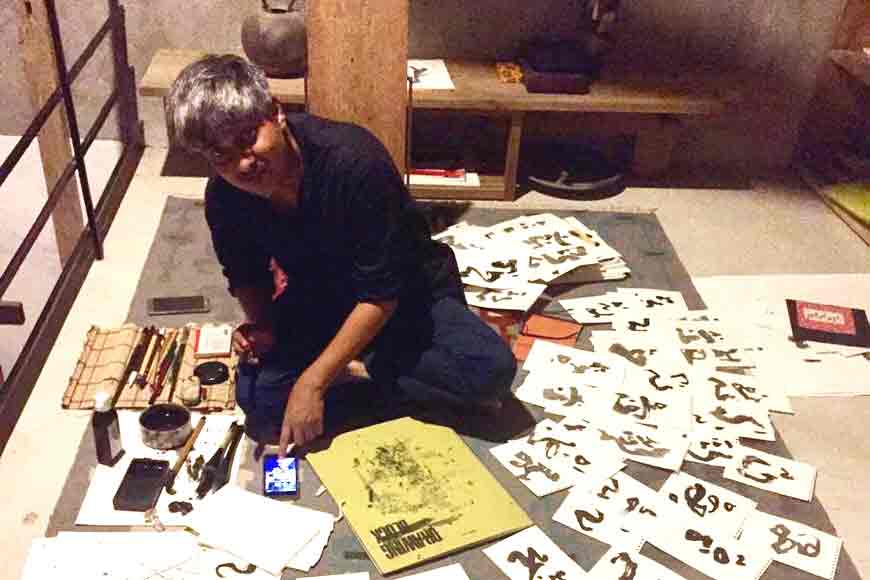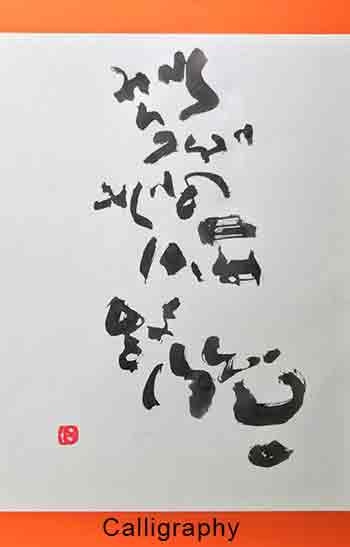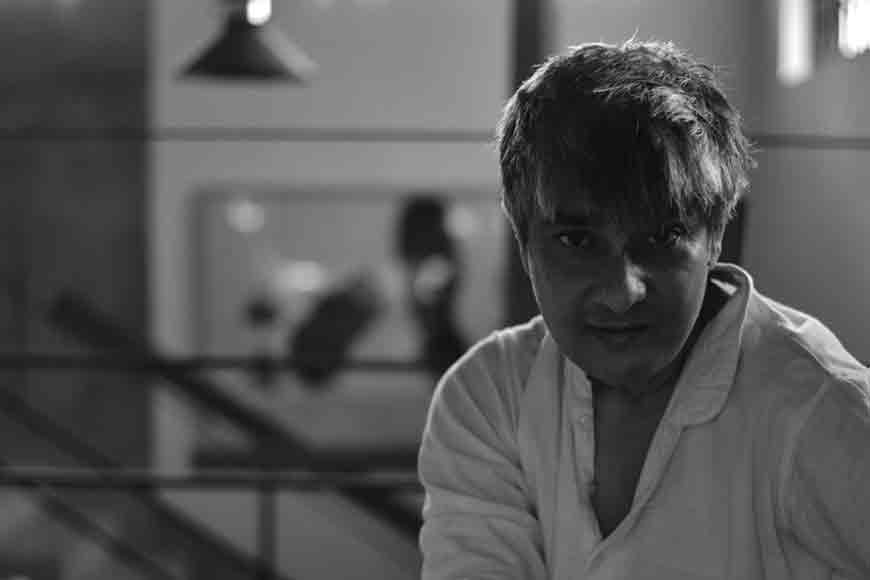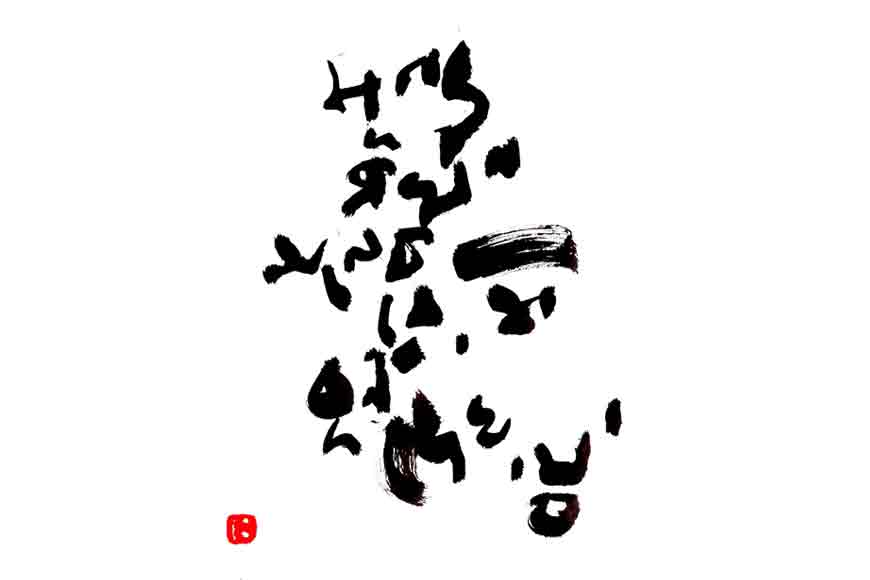Nilanjan Bandyopadhyay interprets Bengali poetry through calligraphy

Nilanjan Bandyopadhyay is a poet, but is fond of writing short poems in form of calligraphy. He is re-interpreting this form of art. He met several Japanese artists in 1998-1999 and adapted their ways of working and implemented that in Bengali alphabets and characters. His exhibition of Poetry and Calligraphy is opening today at MAYA Art Space and is on till 6th November between 2-8pm
• Your exhibition ‘Poetry and Calligraphy’ happens to be based on a unique concept. How different it is from any other art exhibition?
 I write Bengali poetry with ink and brush in the Japanese calligraphic traditions. I work from my studio Kokoro (meaning heart in Japanese) designed at Santiniketan by a talented and young Japanese architect Kengo Sato in association with Milon Dutta. The exhibition at MAYA Art Space will essentially highlight the amalgamation of poetry and calligraphy, giving it a different dimension and a different language of expression. The idea of writing Bengali with brush struck me during my frequent visits to Japan, interacting closely with countless masters of Japanese Shodo. Shodo in Japanese means ‘the way of writing.’
I write Bengali poetry with ink and brush in the Japanese calligraphic traditions. I work from my studio Kokoro (meaning heart in Japanese) designed at Santiniketan by a talented and young Japanese architect Kengo Sato in association with Milon Dutta. The exhibition at MAYA Art Space will essentially highlight the amalgamation of poetry and calligraphy, giving it a different dimension and a different language of expression. The idea of writing Bengali with brush struck me during my frequent visits to Japan, interacting closely with countless masters of Japanese Shodo. Shodo in Japanese means ‘the way of writing.’
• How was the art of calligraphy popularised in Bengal?
Use of calligraphy was always popular in Bengal for decorative purposes or in graphic designing as commonly seen in posters, book covers, billboards and so on. In such cases, calligraphic works are primarily meant to be read by viewers as beautifully or creatively written words. Abstraction in Bengali calligraphy is rare. Calligraphy in Bengali has been used for commercial art such as wedding cards and book illustrations, but its abstract form has always remained undiscovered, especially in Bengali.
• Who did you learn this art form from and how did you blend it with usual paintings?
An ardent admirer of Japanese aesthetics, I have been significantly influenced by Japanese poets, especially Japanese Zen monks, who simultaneously created poems and calligraphic art and often concluded their career by writing a death-poem. Three calligraphic styles are commonly noticed in Japan today: kaisho (block style), gyosho (semi cursive style) and sosho (cursive style). I prefer the cursive style to write poetry using Bengali script. The cursive style, quite often, makes it difficult to decipher the text written in few, swift strokes, unless explained.
 Mr. Nilanjan Bandyopadhyay
Mr. Nilanjan Bandyopadhyay
• What message do you wish to send through this unique art form?
I am usually fond of using traditional Japanese writing accessories which include: kami or hanshi (paper), shitajiki (supporting pad), sumi (ink), suzuri (ink stone), fude (brush), suiteki (water dropper), bunchin (paperweight). It is customary to sign calligraphic works along with one or multiple rakkans (seals). My most favourite personal seal bears the Japanese katakana alphabet ‘ni’ representing my name. In Japanese calligraphic practices, it is important to transmit one’s life force and energy (ki) into writing in a situation of freedom and joy. This is exactly what I have been trying to practice without being much concerned about its possible success or failure.
 Emptiness seems much fuller now. Ink and brush on paper
Emptiness seems much fuller now. Ink and brush on paper
• How do you plan to popularise calligraphy and among students of today? Do you find the young artists are attracted to this art form?
Calligraphy is an interdisciplinary form of art. I spread my work through social media. A lot of people, mainly youngsters approach me and follow my working style and I am extremely happy that this form of art is reaching out to people. I plan to do more such exhibitions with variety of brush works and ink in India as well as abroad.










